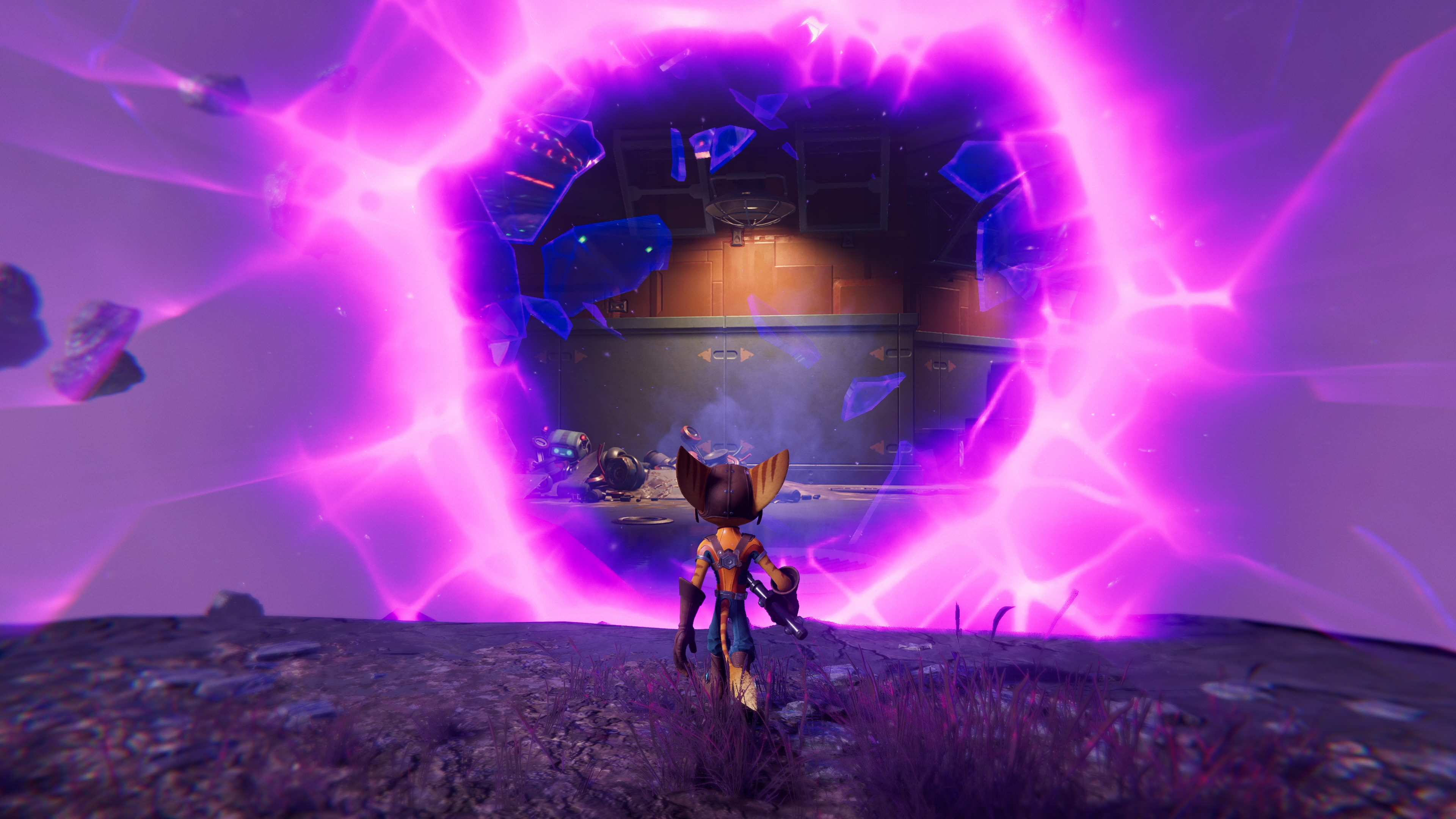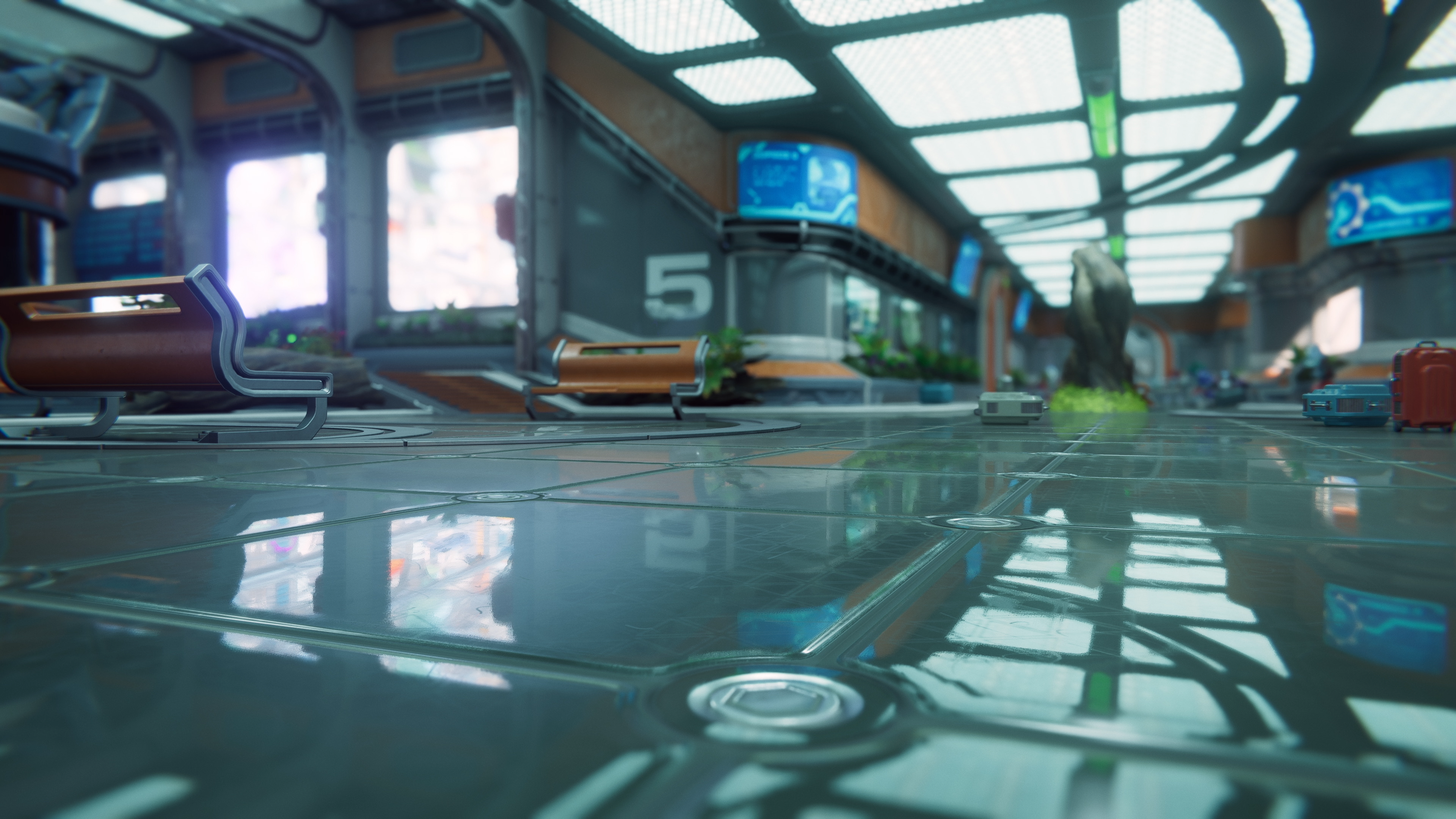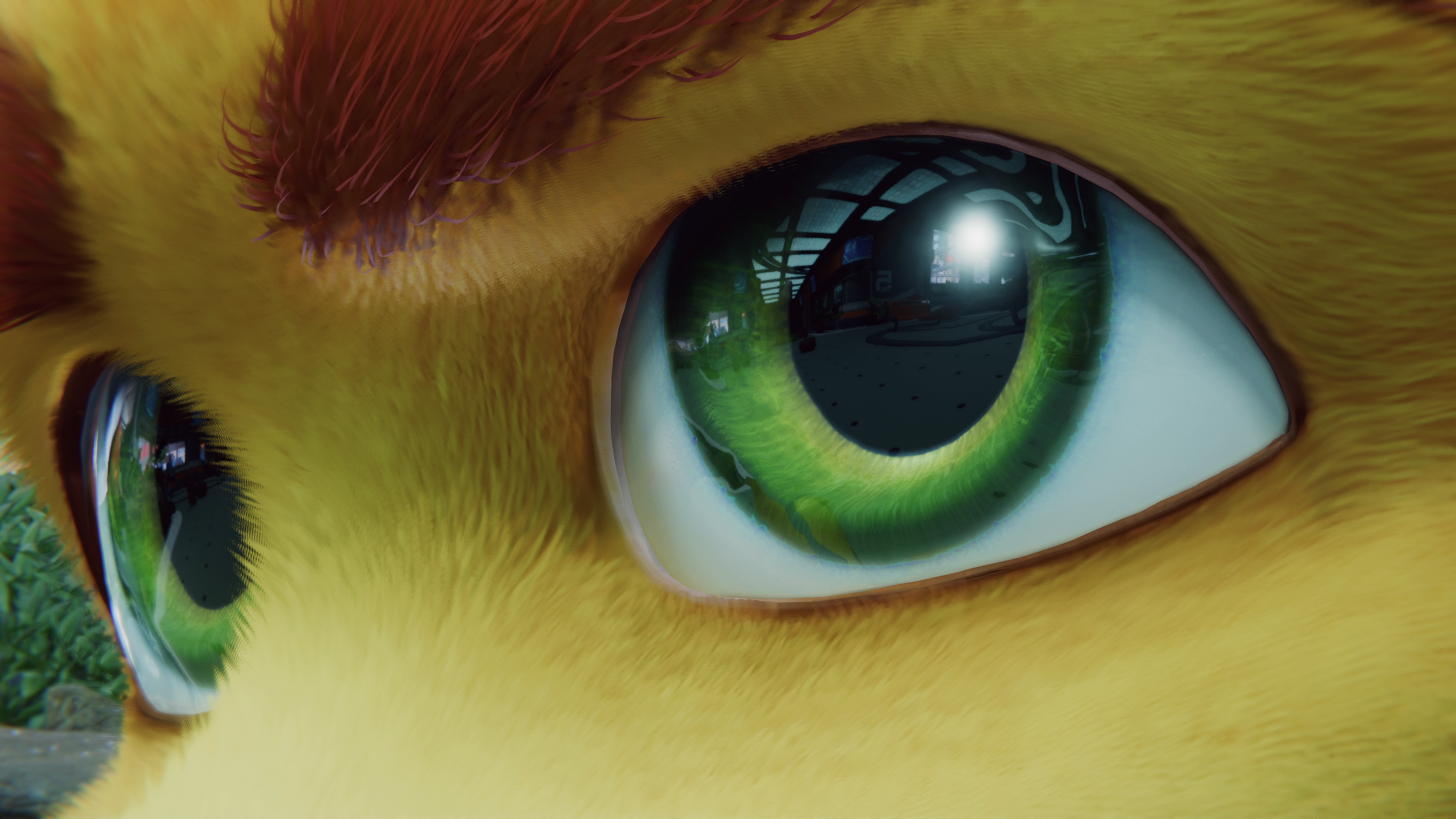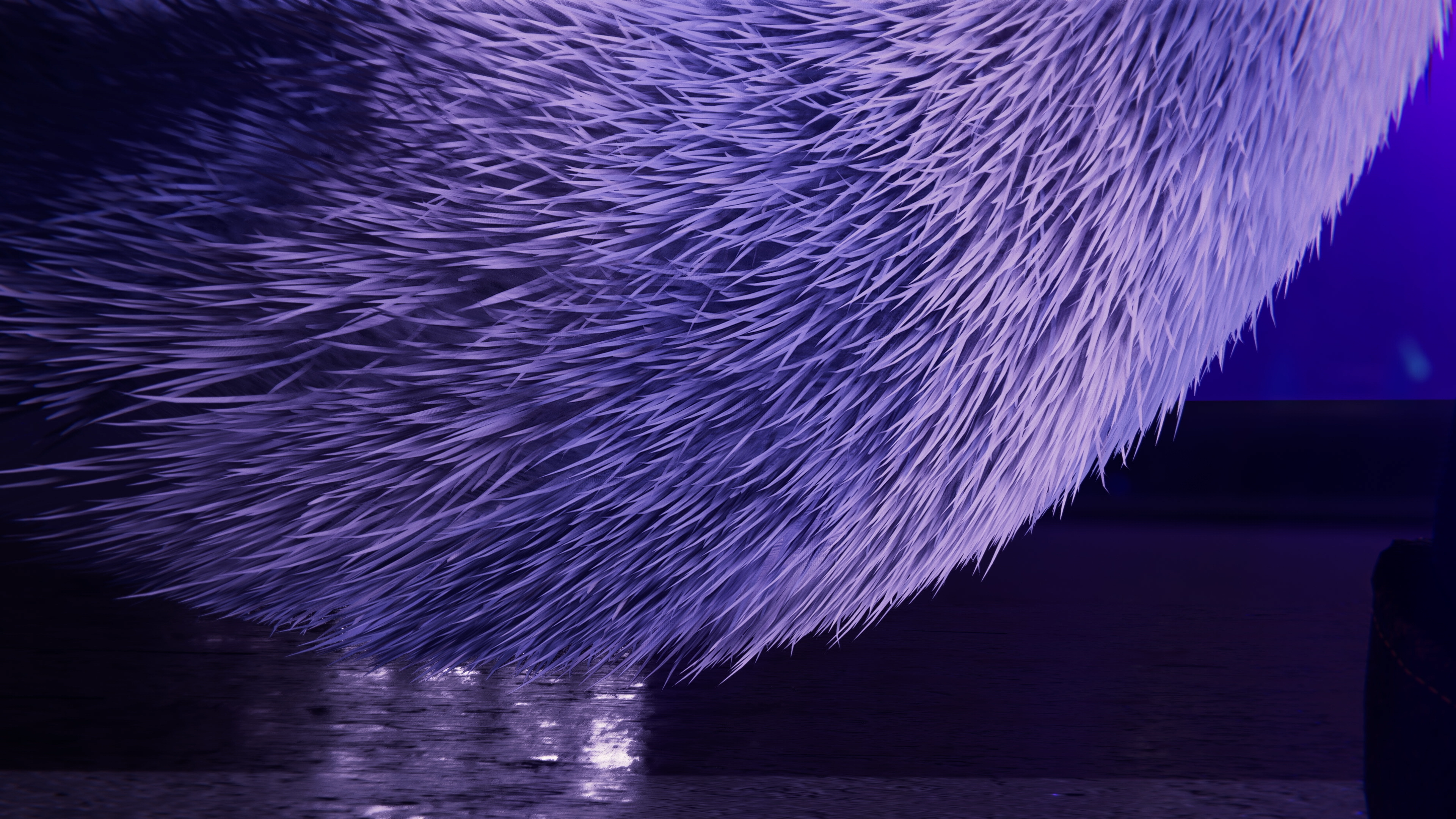We’ve all seen the trailers, right? Beyond the beautiful, dense visuals, the fast SSD allows seamless transitions between completely different worlds - a signature gameplay feature of the new game, while saturating the GPU with an astonishing level of detail. RDNA 2’s ray tracing features are also deployed, with beautiful high resolution reflection work. Well, the good news is that the final game is actually better than the trailers. In fact, we were surprised to see that the day one patch - which actually ‘dropped’ last Saturday - actually improved quality still further. One of the early trailer’s showpiece sequences, showed Ratchet launching through multiple dimensions in real-time. In the original demo, there were noticeable hiccups in performance as areas were loaded and unloaded, but it served as an impressive example of what was possible. This same sequence exists in the final game and these hiccups are eliminated completely - at least mostly. I did note an occasional single extra frame on the frame-time graph but it’s dramatically better than the demo. Furthermore, in the original demo, these rifts were not drawn within ray traced reflections - if you look at the final game, however, you’ll see that they are reflected now. I think this is worth highlighting as it highlights a case where the final game improved upon the visuals in the early trailer - it’s an upgrade! In terms of how the review code has improved substantially via its day one patch, the performance and performance RT modes now run more smoothly and I was fascinated to note that quarter resolution RT reflections now seem to operate at checkerboard 4K, giving a substantial boost to quality. Impressive stuff. Similar to Marvel’s Spider-Man on PS5, there are fidelity, performance and performance RT modes in Rift Apart, and we’ll be looking at that in a separate article. But returning to the core subject, it’s the SSD that is the game changer for PS5, and the rift mechanic bakes that into the gameplay. The most basic rift type appears during many combat sequences - target the rift and you immediately pull yourself to another section of the map. The rift object itself is pulled towards the player and, at a certain point, it snaps over to the new location. However, there are other places where portals lead to completely different areas. In this case, the game is rendering two unique viewports and both are full featured - motion blur, anti-aliasing, volumetrics, shadows etc are all rendered correctly in the two viewports enabling seamless transitions between areas. You can walk between these two areas seamlessly. This same dual viewport technique is used to allow true Star Wars-style cross-wipes in real-time cut-scenes. It may seem simple but in this case, during the wipe effect, each viewport is being rendered at full rate and quality in real-time. Things become even more ambitious when you arrive at the world known as Blizar Prime. Upon arrival, all that remains of this planet is floating rubble, but hitting certain large crystals instantly transports you to another version of this world, an alternate dimension before it as destroyed. This mechanic factors directly into some of the puzzles you’ll solve on this planet and transitioning between planes is nearly instant - just a quick flash to white. You’ll need to manipulate elements in one dimension then switch back to the other to make it through. Further in, you’ll switch dimensions mid-rail grind, changing the layout of the stage - so not only is the game swapping between two maps but it needs to retain character momentum and position between them. The idea resembles the Effect and Cause mission featured in Titanfall 2 where you can switch between time period with the press of a button - the difference with Ratchet is that you’re switching between two bespoke maps only one of which will be resident in memory at any time. When you swap between them, only your characters remain in memory - everything else is dumped and the new map data is pulled from the SSD almost instantly. There are no tricks here - it’s just that fast. Nothing like this could be achieved on last-gen hardware: it’s both a visually striking feature and one that is instrumental to the way Rift Apart plays. But this is still a Ratchet game and Insomniac manages to nail the core fundamentals. At the centre of any character action game are the characters, obviously. Ratchet and Rivet steal the show with a superb level of detail on display. Insomniac has brought over its hair strand system first deployed in Miles Morales over to Ratchet enabling fine detail in the fur of its many characters. It seems to use a combination of strands and shell textures to create varied thickness to the fur. The main character models at their highest quality feature upwards of 250,000 triangles, not including the fur strands which can multiply this significantly. This is matched with superb materials for cloth, leather and metal applied to their costumes plus system for realistic eye rendering, which features ray traced reflections and artist-driven secondary highlights designed to enhance the toon-like design. Characters also receive a mix of ray-marched screen-space shadows for fine detail combined with traditional shadow maps to handle shadow detail. This is matched to high-quality animation complete with toon-esque squash and stretch to accentuate motion. During cutscenes, it’s fair to say that Rift Apart resembles a pre-rendered movie: motion capture was kept to a minimum and it shows, you don’t get that impression of characters marching around in a suit, it really looks like a cartoon. The point here is simple. Insomniac is showcasing what extra detail means for animated characters like this on a next-gen machine, to the point where Ratchet’s PS5 rendering holds up against the 2016 CG movie. Of course, there are still aspects of rendering for movies that aren’t possible yet in real-time - this is still true - but the perception is that we’re getting really close, and I’d say that in some respects, PS5 is actually pulling ahead. But it’s not just the main characters that receive such detail. Deploy photo mode and examine any enemy or NPC running around and you’ll find comparable levels of quality on display. I was genuinely surprised at just how much detail can be found in the minutiae to the point where spent shell casings left behind in combat are actually fully detailed models with surprisingly rounded edges and ray traced reflections. Yes, RT features heavily in Rift Apart. Like Spider-Man on PS5, Ratchet makes use of hardware-accelerated ray traced reflections with materials of all varieties tapping into the reflection data. From large flat mirror-like surfaces to rougher surfaces you’ll encounter later - it adds a lot of depth to the world in a way that differs from the metropolis seen in Marvel’s Spider-Man. What’s impressive to me is how reflections apply to curved glass in a realistic manner - in fact, reflections even flip upside realistically when looking into dome shapes. But it’s the quality of the reflections that impress the most, and as I mentioned earlier, I was delighted to see the quality improve on the day one patch. It seems that Insomniac has switched to a checkerboard/sparse rendering solution for reflections - so the amount of work has increased but it’s still within the rendering budget. It’s really a nice jump in quality. So at this point, you should have a good idea of what to expect from the game. The fast loading, ray traced reflections and high level of detail all elevate Rift Apart to a level beyond anything we’ve seen before in a character action game. It’s suitably next-gen but we have not talked about performance metrics and image quality, so let’s tackle that. To begin with, the day one patch arrived when this video was already deep in production so, as noted earlier, we’ll discuss that in more detail soon, but first impressions are solid - the 60 frames per second ray tracing mode is very fluid as you would hope. The game’s 30fps fidelity mode is the default and native 4K is the target. Dynamic resolution scaling (DRS) is enabled and has a floor of 60 percent of 4K as the lowest possible resolution but in reality, the game maintains 2160p the majority of the time with dips to 1800p occurring when things heat up. The key here is that image quality is kept clean in motion. Insomniac’s temporal injection solution remains in use here, being applied to these high pixel counts to great effect. It is, effectively, very much like what we saw in Marvel’s Spider-Man at launch on PlayStation 5 when using the fidelity mode. Performance in this mode is as expected really: effectively, we’re looking at a near flawless 30 frames per second during gameplay. No amount of particles impacts frame-rate in this case - it’s very smooth, as you would hope. The only interruption to fluidity comes from camera cuts during cutscenes, just like Marvel’s Spider-Man. It’s not that performance is dropping, it’s more like Insomniac ‘banking’ a frame to ensure consistency in its temporal injection technique. So, with all that said, I believe Ratchet and Clank Rift Apart is a indeed a showcase title for the next-generation of consoles. It’s a game that is not possible on PlayStation 4 but, similar to prior entries in the series, I believe it will stand the test of time. It builds upon the mechanics first introduced in the 2016 game and improves them - it’s the best playing entry in the series by far. It also raises the bar as far as storytelling goes - it keeps the fun vibe of the originals but you can tell that the studio has gained confidence in its cutscene and setpiece direction following the success of Marvel’s Spider-Man. This game is a proper ’event’ and a superb demonstration of the potential offered by the next generation of gaming hardware.



